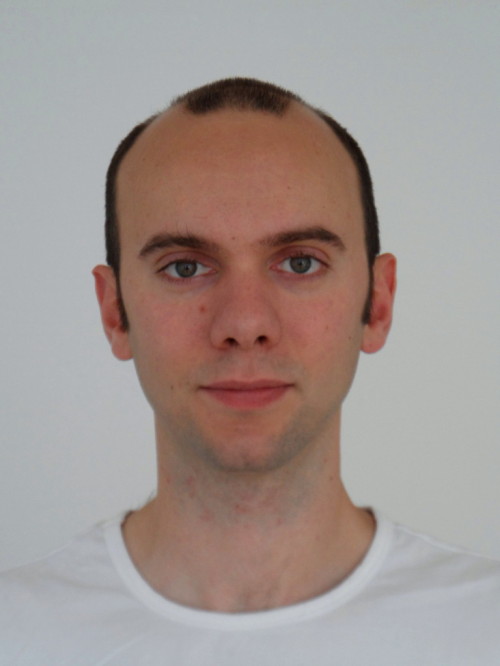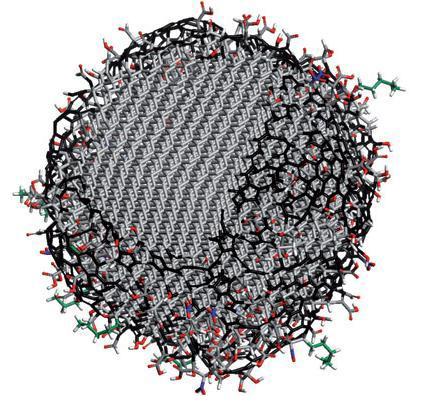Humboldt Fellow new addition to Aziz team

Dr. Tristan Petit joins the Aziz-Team. Foto: T.Petit

Simulated view of a nanodiamond. © T. Petit
Starting June 1st, Dr. Tristan Petit will be joining Prof. Dr. Emad Flear Aziz’ team for a two-year postdoc. His Humboldt Foundation Fellowship for Postdoctoral Researchers gave Petit the option to choose his German scientific host. Ultimately, he decided on the Joint Ultrafast Dynamics Lab in Solutions and at Interfaces (JULiq) that was set up by Aziz. Says Petit: “I really wanted to be on Aziz’ team as they have a lot of collective expertise with spectroscopy in water.”
26-year-old Tristan Petit earned his Ph.D. degree at the Ecole Normale Supérieure de Cachan, France, back in March of this year. His doctoral work at the Diamond Sensors Laboratory (CEA), Gif-sur-Yvette, focused on nanodiamond surface modifications to evaluate their biomedical potential. Nanodiamonds could make good “drug cabs” as they have low toxicity and their surfaces can be easily functionalized for the transport of other molecules.
Although to date, the interactions between water molecules and nanoparticles remain unclear. Petit has made it his mission to get to the bottom of these interactions: He is planning on using soft X-ray spectroscopy to study water-based dispersions of nanodiamonds “in situ” on a microjet. This may provide important clues about how these special nanoparticles behave under physiological conditions, in other words, in the body. “Thanks to the unique Lixedrom experimental setup, we’re able to conduct experiments that can’t be done anywhere else really. Ultimately, that was a strong motivating factor for me to come to Berlin,” admits Petit.
arö
https://www.helmholtz-berlin.de/pubbin/news_seite?nid=13730;sprache=en
- Copy link
-
Battery research with the HZB X-ray microscope
New cathode materials are being developed to further increase the capacity of lithium batteries. Multilayer lithium-rich transition metal oxides (LRTMOs) offer particularly high energy density. However, their capacity decreases with each charging cycle due to structural and chemical changes. Using X-ray methods at BESSY II, teams from several Chinese research institutions have now investigated these changes for the first time with highest precision: at the unique X-ray microscope, they were able to observe morphological and structural developments on the nanometre scale and also clarify chemical changes.
-
BESSY II: New procedure for better thermoplastics
Bio-based thermoplastics are produced from renewable organic materials and can be recycled after use. Their resilience can be improved by blending bio-based thermoplastics with other thermoplastics. However, the interface between the materials in these blends sometimes requires enhancement to achieve optimal properties. A team from the Eindhoven University of Technology in the Netherlands has now investigated at BESSY II how a new process enables thermoplastic blends with a high interfacial strength to be made from two base materials: Images taken at the new nano station of the IRIS beamline showed that nanocrystalline layers form during the process, which increase material performance.
-
Martin Keller elected new president of the Helmholtz Association
The Helmholtz Association has appointed internationally respected US-based scientist Martin Keller as its new president. Her has lived in the United States for nearly three decades, during which he has held various scientific leadership roles at prominent institutions. Since 2015, Keller has directed the National Renewable Energy Laboratory (NREL) in Golden, Colorado. His term begins on 1.11. 2025.
